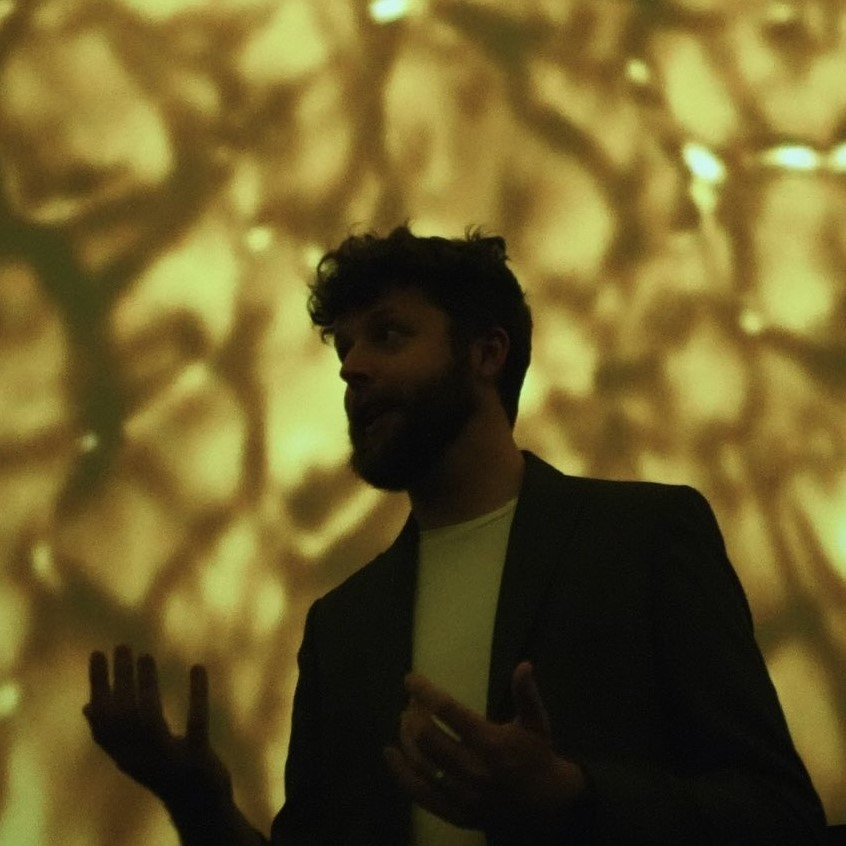More people Googled 'northern lights' in May 2024 than in any other month in history
Public interest in the sun was at an all-time high in May. Here we explore why this was the case.

The terms 'northern lights', 'space weather' and 'geomagnetic storm' were googled more in May 2024 than in any other month in the search engine's history.
With April's total solar eclipse, and Mid-May's widespread aurora show, public interest in the sun has been much higher than usual. As photos and discussions of the eclipse and northern lights flooded social media and secured segments on prime-time news broadcasts, Google search inquiries for these topics shot up significantly.
Using the Google Trends feature, we can utilize Google search statistics to track how public interest in the sun, solar flares and northern lights have changed over the past two decades. In this article, we explore the Google trends of 10 different sun-related topics.
Northern lights and southern lights

Prior to May 2024, searches for 'northern lights' and 'southern lights' were fairly consistent. We saw a steady baseline, with annual increases in search around the Northern Hemisphere winter time, as the northern lights become more visible in the Northern Hemisphere.
Interestingly enough, the annual spike in 'southern lights' searches also comes from the Northern Hemisphere winter (Southern Hemisphere summer), which is not the prime time to observe the southern lights. This suggests that 'southern lights' searches are still dominated by those in the northern hemisphere. Both curves here are shown as a percentage of the busiest month for each term individually. In reality, searches for 'southern lights' are only around 2% of those for 'northern lights'.
In the cases of searches for the lights from both hemispheres, May 2024 absolutely dominated. For 'northern lights', searches in May 2024 were 8 times higher than in any other month on Google records. This dramatic jump really captures the level of public interest in the mid-May geomagnetic storms, in part due to the widespread viewership of the aurora show. May's geomagnetic storm was the first G5 storm since October 2003 and resulted in the greatest extent of the northern lights since the 2003 event. Had Google been widely used at that time (with records still available), we might expect October 2003 to show a similar peak to May 2024.
Get the Space.com Newsletter
Breaking space news, the latest updates on rocket launches, skywatching events and more!
Related: We may have just witnessed some of the strongest auroras in 500 years
Coronal mass ejection and solar flare

Searches for 'coronal mass ejection' and 'solar flare' show a clear spike in May 2024, but less significant than the trends for 'northern lights'. Examining the graph, each spike corresponds to notable events on the sun. This is to be expected, but still interesting to see the pattern of solar activity translate directly into public interest on the topic.
We see a short but sharp peak in September 2017, the month in which we experienced the two largest solar flares in Solar Cycle 24 (September 6th and 10th, 2017). No flares within the current solar cycle have topped these two events. The coronal mass ejection (CME) of the September 10, 2017, flare also set the record for the fastest initial velocity and quickest acceleration measured in a CME. The larger spikes from 2010-2012, and in 2014, correspond to other periods of high solar activity during the previous solar maximum.
Because searches for these terms correlate to the number of solar events, they therefore correlate naturally with the sun's 11-year solar cycle of increasing and decreasing solar activity. This trend was highlighted recently in a comic from XKCD.
Google Solar Cycle https://t.co/ZX07nbuDWX pic.twitter.com/4ltufUzoJaMay 9, 2024
Solar storm and geomagnetic storm

The search trends for 'solar storm' closely follow that of 'coronal mass ejection', peaking around all of the same events. However, the term 'solar storm' is a bit informal and doesn't have a specific definition scientifically. Instead, it is often used colloquially to describe the effects of solar activity (including CMEs) at Earth. A more scientifically precise term for 'solar storm' is 'geomagnetic storm', which refers to the disruption of Earth's magnetic field as a consequence of a CME or fast solar wind stream. Geomagnetic storms are the direct cause of the aurora.
Unlike, 'solar storm', where the May 2024 search spike failed to top searches in early 2012, searches for 'geomagnetic storm' dominated in May, reaching searches 4x higher than any other month on record (October 2021 and March 2024). This spike of 'geomagnetic storm' (compared to events in the previous solar cycle) likely comes as better and more scientifically precise language is used in the public communication of these events.
Space weather

'Space weather' is the term used to describe the influence of solar activity on the Earth and near-Earth environment, including the influences of CMEs on the aurora and human technology. The search trend graph shows many peaks and dips, and it is difficult to assign any of these peaks to specific events of news stories. There is one exception to this, which is the clear spike in searches during May 2024.
Sunspot and aurora


Not all phrases relating to the sun are used exclusively in solar physics, with 'sunspot' and 'aurora' being two examples of this. Examining the trends for 'sunspot', it is difficult to see any trends relating to solar activity. Searches begin high but slowly decrease with time. From probing Google analytics further, it is revealed that these searches do not relate to the sun at all, but instead refer to the Marvel character of Sunspot, who features in various X-men comics and movies. A small spike in the search for this term can be seen in May 2014, marking the release of the film X-Men: Days of Future Past, in which the Sunspot character features. The largest isolated spike in 2018 is different, however, corresponding to U.S.-based news coverage of events in the town of Sunspot, New Mexico.
Similarly to 'sunspot', 'aurora' also has multiple meanings: including the city of Aurora in Colorado (USA), and a musician with the same name. A clear spike for the term can be seen in May 2024, relating to the widely viewed aurora event. The earlier peak in 2012 does not coincide with the northern lights, but is instead much darker — corresponding to a tragic public event in Aurora, Colorado.
Solar eclipse

On April 8, 2024, a total solar eclipse was visible to millions across North America, spanning from Mexico, across the United States, into Canada. The eclipse produced a huge spike in search results for 'solar eclipse', the second largest peak for searches of the term in Google's records. Searches for the April 2024 eclipse were eclipsed (sorry) only by the August 2017 eclipse, despite that event being visible to fewer people. Other small spikes in the graph correspond to other eclipses, including the recent annular solar eclipse in October 2023. However, as of May 2024, the eclipse was already long forgotten, as public interest in eclipses quickly dropped back down to background levels.
Although there are no total solar eclipses until 2026, high solar activity on the sun is still ongoing. With enhanced solar activity persisting as we approach solar maximum, and with further widespread aurora possible in June 2024 (and beyond into late 2024-2025), it will be interesting to track how public interest in the sun continues to evolve.
Join our Space Forums to keep talking space on the latest missions, night sky and more! And if you have a news tip, correction or comment, let us know at: community@space.com.

Dr. Ryan French is a solar physicist, science communicator and author. He is pursuing the mysteries of the sun at the forefront of modern solar physics research, using cutting-edge telescopes on the ground and in space. Ryan also works to share the wonders of the sun and space with the public, through museums and observatories, television, and social media on Twitter and TikTok. Ryan's first book, "The Sun: Beginner's guide to our local star" was published in 2023.
-
Anamrakarmana I've been lurking on Space.com for a reallly long time, and you finally got me to register! :tearsofjoy: I love Space.com, but had to comment on this one. Just your headline, that's all. The sensationalism embellished in this is really over the top. "In history"? I mean, sure... definitely more than it was Googled in 1775, or 1803, without a doubt. But did you fact check against how many Googled it in 1939? I mean, a lot of folks really had a lot of time on their hands to watch the northern lights that year.Reply
Now, if the headline said, "since 1997," you'd have me hands down! :beercheers: -
billslugg Yes, the headline is misleading, but later on it says "in Google's history". This is the kind of mistake humans don't usually make, but bots do.Reply -
Unclear Engineer Bill, You seem to be "seeing" things from "bots" a lot, recently.Reply
Why are you thinking headlines that are misleading are the products of "bots"? I have been seeing the same sort of thing from well before we had any "bots".









